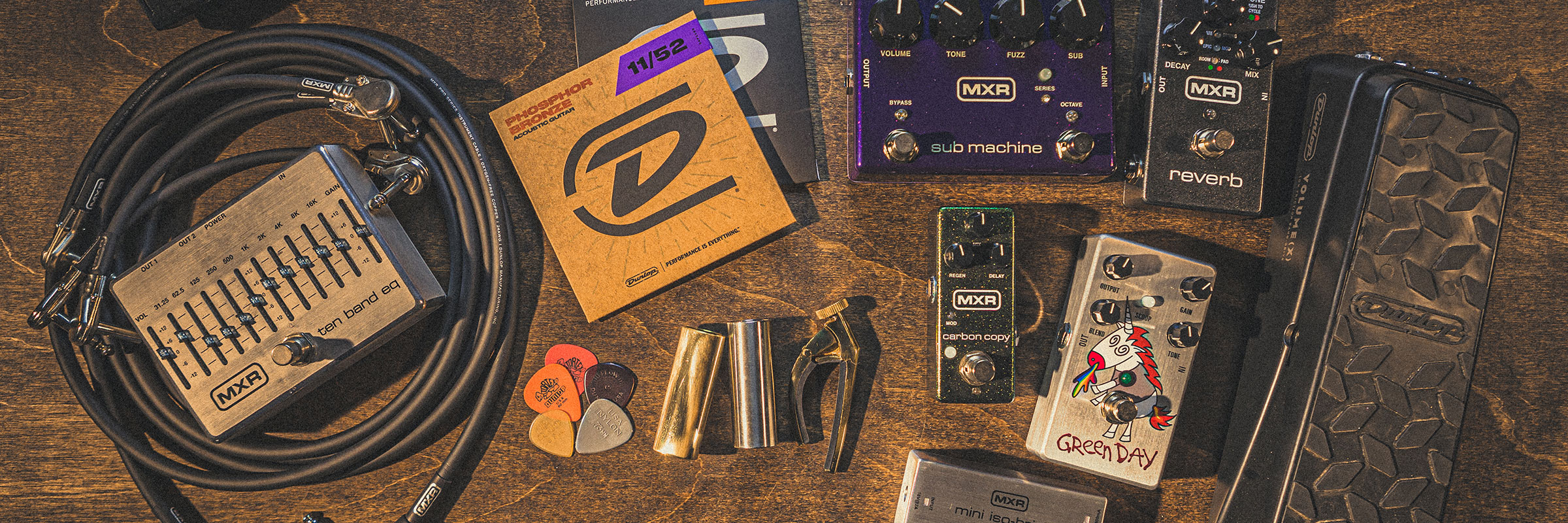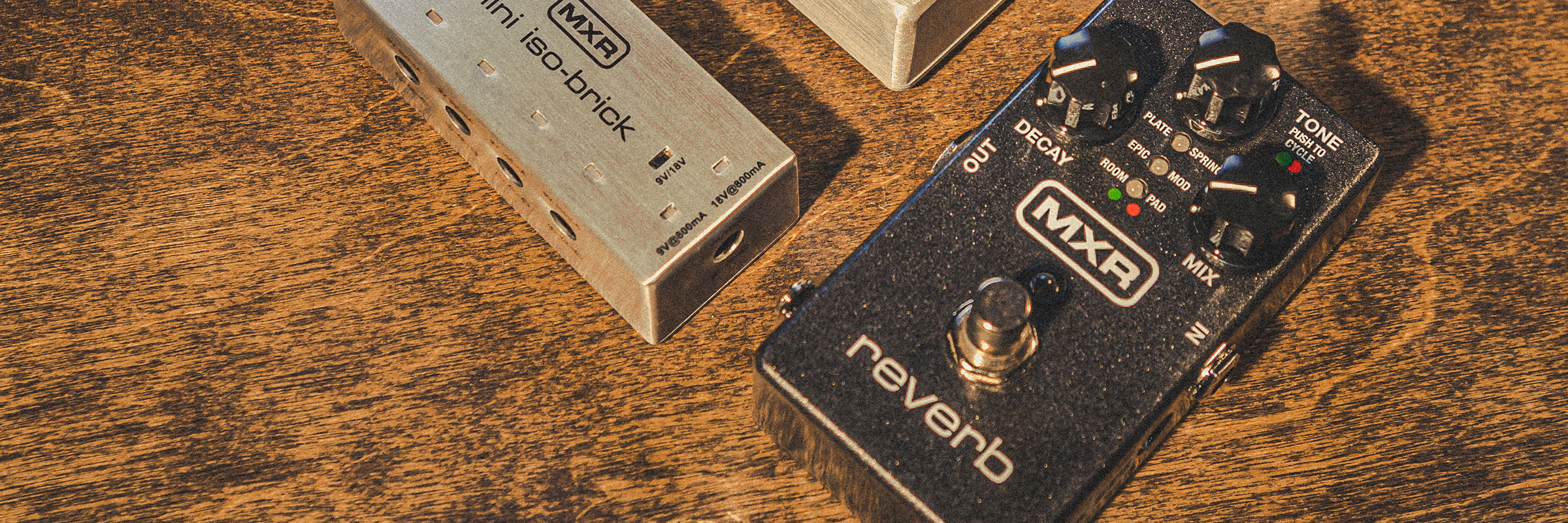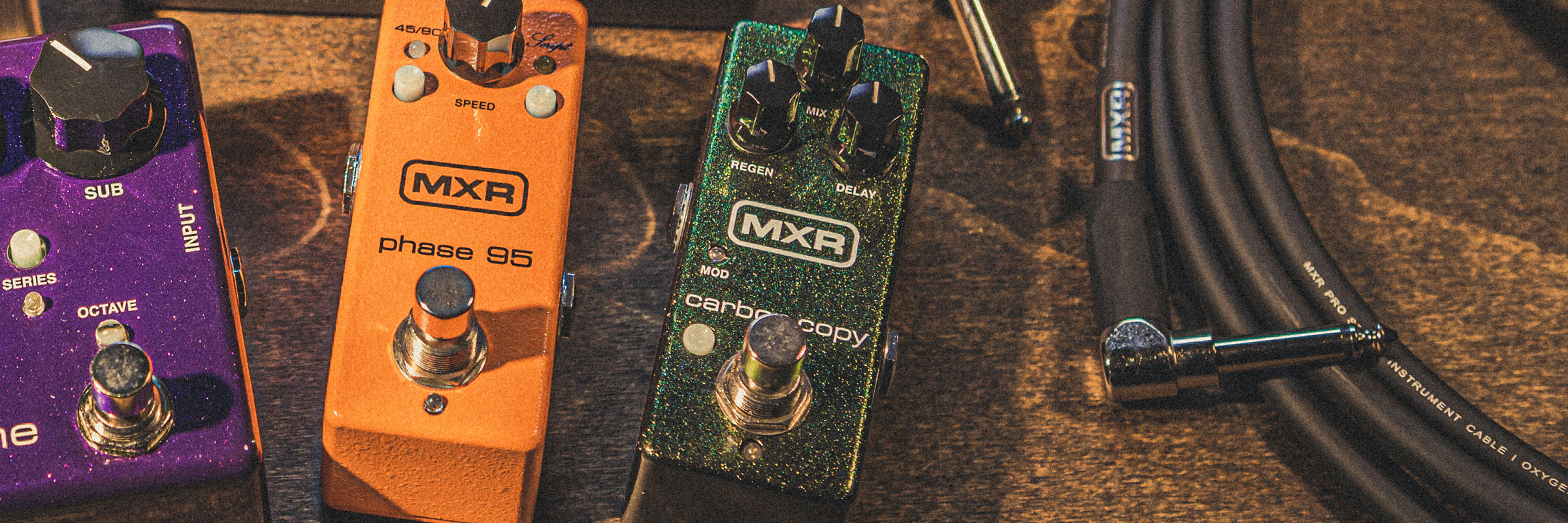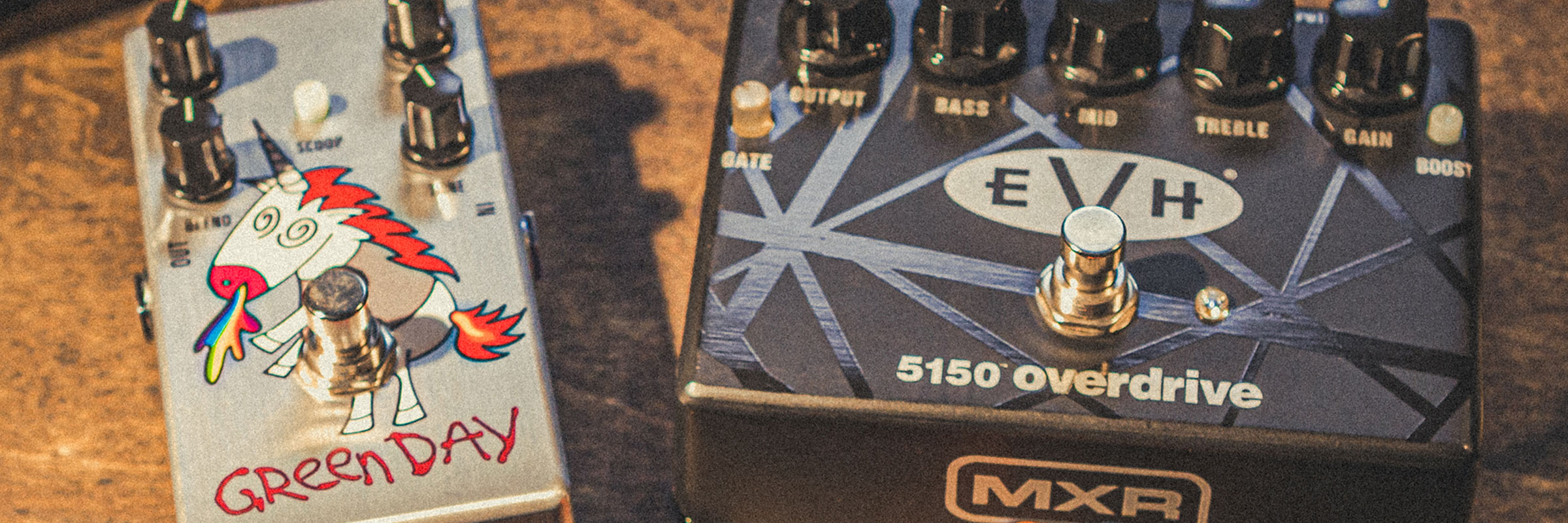Playing at home is a different animal than playing on stage. Playing live requires many different choices to be made—which guitar and amp to use, which pedals to put on your pedalboard, and so on. At home, though, there are no limits. You can just reach for the other guitar or plug in the other amp, and your pedalboard can be as expansive as you want it to be. Here’s what we recommend when it comes to setting up your own practice and recording station, utilitarian and creative alike.

CATEGORIES
MOST RECENT
ARCHIVE
- August 2024
- June 2024
- April 2024
- August 2023
- May 2023
- April 2023
- March 2023
- February 2023
- January 2023
- December 2022
- November 2022
- October 2022
- September 2022
- August 2022
- July 2022
- June 2022
- May 2022
- April 2022
- March 2022
- February 2022
- December 2021
- November 2021
- October 2021
- September 2021
- August 2021
- July 2021
- June 2021
- May 2021
- March 2021
- January 2021
- November 2020
- October 2020
- August 2020
- July 2020
- May 2020
- March 2020
- January 2020
- June 2019
- May 2019
- April 2019
- October 2018
- June 2018
- April 2018
- December 2017
- November 2017
- October 2017
- September 2017
- July 2017
- June 2017
- April 2017
- March 2017
- February 2017
- September 2016
- July 2016
- May 2016
- September 2015
- August 2015
- July 2015
- April 2015
- March 2015
- November 2014
- June 2014
- March 2014
- June 2012

& MINI ISO-BRICK™
POWER SUPPLIES
The power supply is the backbone of any pedal setup. The Iso-Brick and Mini Iso-Brick Power Supplies cover a wide range of needs, allowing you to run just about any pedal. Running high-end digital pedals alongside your classic dirt boxes is child’s play for either power supply, so go with the one that best fits your layout needs. Each has totally isolated outputs, protecting your signal from interference in your surroundings and making it very easy to troubleshoot connection issues—all important considerations when recording at home.

It should go without saying that you need reliable, high quality cables in any playing situation where you’re running electronics, and this is doubly true when recording. MXR Pro Series Instrument Cables are well-insulated to keep noise out—even that generated by computers—and along with MXR Patch Cables, they’re designed to transmit clean, pure tone.

The MXR Ten Band EQ is an invaluable tool thanks to its broad tone-shaping ability. Put it at the front of your signal chain if you want to pre-condition the sound of your instrument, or stick it right after your dirt pedals if you love the way that they sound, but there’s just not enough highs or lows. Try putting it at the end of your signal chain to put a final touch on your sound before it goes into your recording interface. Wherever you place the Ten Band EQ, it’s an absolute must-have when laying down tracks.

A compressor is an essential tool in any recording setup to ensure a consistent, even signal. Sometimes a change in the intensity of your attack or stepping on a particular pedal will cause a drop or a spike in level where you don’t want it. A good compressor will “correct” for these occurrences and give you control over the dynamics of your signal. The MXR Studio Compressor is just such a device, providing an array of tweakable parameters with an LED indicator to show compression response in real time.

Just about the easiest way to get creative with your playing experience is to change up the pick you’re using. There are so many different materials, shapes, and sizes available nowadays, and each characteristic has an impact on the way you sound and the way you play. Tortex® Picks are famous for their bright, snappy attack—but what if a piece you’re composing lends itself to rounder, warmer tones? Try Nylon Picks. For a brighter, more aggressive sound, try Ultex® Picks. Playing fast and need a pick with more definition and less resistance? Try Flow® Picks or Jazz III Picks. Want an easier time strumming? Try a lighter gauge. There’s a Dunlop Pick for every situation and playing style—the easiest way to see which one is for you is to check out one of our Pick Variety Packs.

As with picks, we tend to stick with the strings that we know, but they, too, are another part of your setup that is ripe for the kind of exploration that will enrich your recording experience. Experimenting with gauges, for example, will help you find the right feel for your instrument—go with lighter sets if you’re playing a longer or multi-scale instrument, for example. Heavier gauges help balance out the lower tunings that can provide a darker, heavier, or more sombre vibe to your recording.
Gauges offer more than just a change in feel, though—tracking with different gauges is a great way to bring in a different tonality to your recording. This is a great boon if you’re doing all the tracking yourself, and you don’t want all of the guitar parts to sound exactly the same. Try recording different takes with differently gauged sets, panning them opposite each other to create an interesting tone you can’t achieve any other way. If you’re strumming on an acoustic, go with a lighter gauge than you would typically play to get shimmering highs and a tight, compressed low end. For electric rhythms, go with a lighter gauge to bring out the highs and mids and, again, tighten up the low end—no matter whether you’re clean, overdriven, or distorted. Heavier gauges will fill in the low end and tighten up your chords for fast syncopated riffage. Again, play with blending different tracks of each round of gauges to create unique tonal concoctions.
Light gauges are perfect for tracking solos because they allow you to let your inspiration carry you from note to note without making your hands work too hard. Don’t worry about sounding too thin—plenty of guitar players have extracted rich, fat tones from thin sets of strings. Eddie Van Halen, Billy Gibbons, Steve Vai, and Yngwie Malmsteen can all show you something about that. Conversely, you can use heavier sets to tame a fast vibrato or control tuning issues caused by a heavy picking or fretting hand.
Bass players have as much room to experiment with gauges as guitar players do for different tones, tunings, scales, and so on. Playing around with different materials can also add another dynamic to your recording. Stainless Steel Strings bring out the mids and highs, which is perfect for taking a solo or accentuating the percussive sounds generated by slapping and popping. Nickel Wound Strings provide growling low mids and big lows for fat, funky rhythms. Check out our Super Bright™ Bass Strings for an overall brighter tonal take on each material.
Flatwound Bass Strings offer a whole other dynamic. If you want that classic rock and R&B thump, then Flatwounds are the way to go, no exceptions. Even if that’s not the specific sound you’re looking for, they generate a fundamental that’s uniquely deep, full, and round. It sounds incredible on recordings where each bass note is given the space to bloom.
With all of these options, guitar players and bass players should remember to adjust your instrument’s intonation whenever changing up your gauge or material so that you don’t run into any tuning issues later on.

Capos allow you to play in higher keys without having to change chord fingerings. If you’ve composed a piece that sounds almost perfect but there’s something missing that you just can’t identify, changing to a different key might just be what you needed. The Victor® Capo is the perfect option for playing at home—and recording, in particular, because of its superior tuning stability.
Slides add their own layer of expression to stringed instruments, and Dunlop offers a wide variety of sizes and materials that all provide their own experience. Choose a Stainless Steel Slide to electrify a solo or a Brass Slide to fatten up a riff. Other materials and finishes, from Glass to Chromed Steel, provide their own tones and timbres. All of the above can be combined with delay, reverb, and other heavy processing effects to create trippy cinematic soundscapes. Keep a slide or two on hand for those situations where you need to add a little something extra to a recording that isn’t quite popping like you want it to.

Reverb is one of those effects that can serve both utilitarian and exploratory purposes. Sometimes, recorded music sounds flat and unnatural, as if it doesn’t exist within physical space—especially if you’re relying solely on direct input. With just the right amount of reverb added to your signal, you can make it sound like you were playing in an acoustically rich environment. It can also serve as a sort of sonic binding agent to fill in the spaces between disparate elements of your sound, binding them all together for a much more pleasing listening experience. On the other hand, a really good reverb effect can help you create rich, otherworldly atmospheres to explore, to play over and through and around. The MXR Reverb does all of the above and then some, featuring six different exquisitely designed reverb styles to suit your needs and tastes. It’s easy to use with incredible sound quality, making it a must-have for your home recording station.

Delay pedals are a must-have for players looking to open up their compositions to greater dynamic potential. You could go with any number of great options, from the Echoplex® Delay to the Way Huge® Supa-Puss Delay, but we’re going with the MXR Carbon Copy Mini Delay for its rich analog warmth and simple versatility. An optional modulation circuit allows you to add tape echo warble to your repeats, and a Bright switch engages a brighter, more sparkling sound for your repeats should you feel the need to change it up.

A great looper pedal is a songwriting game changer, allowing you to develop different elements of a composition at the same time. The MXR Clone Looper Pedal is one such device—just hit the record switch, put your foundational layer down, and then add as many layers on top of that as your ear desires. It comes packed with plenty of other super fun and useful features—from reverse playback to DJ-style skipping—and it comes in a standard MXR housing, so it’ll take up hardly any space. Put the Clone Looper Pedal on your board, and you’ll wonder how you ever wrote a song without it.

The phaser is a classic effect, infusing your sound with rich, pulsing textures. Players have used phasing to make their riffs thick and chewy and add ethereal momentum to their lead lines. Look no further than MXR for the perfect example of this effect—it was the Phase 90, after all, that set the category’s benchmark. For our songwriting and recording purposes, the Phase 95 is the obvious choice. First, it comes in a mini MXR housing, so it’ll fit in easily with our plentiful array of electronics. Second, it combines the classic Phase 90 circuit with that of its subtler offshoot, the Phase 45, along with the option to use grittier modern-style phasing or clearer vintage-style phasing. That means you get a 4-way ticket for your sonic adventures, and your luggage fits right in your pocket.

The Uni-Vibe Chorus/Vibrato was a key component of the psychedelic sound created by Jimi Hendrix, Pink Floyd, and other sonic pioneers. Designed to replicate the Leslie speaker effect, the Uni-Vibe Chorus/Vibrato adds lush, swirling textures to your sound. It’s similar to a phaser, but this pedal allows you to crank the rich chewiness to much greater levels, leading to truly bizarro territory that’s just waiting to be explored.

Overdrive is all about the rich, natural harmonics and overtones that come from a good tube amplifier. This can be a problem when recording at home, though—you need to crank your amp to get those sounds. The MXR Dookie Drive Pedal, based on Billie Joe Armstrong’s modified Marshall heads, and the EVH 5150 Overdrive, based on Eddie Van Halen’s 5150 head, were both designed from the ground up to deliver the same sounds at just about any level. Having both pedals in your setup gives you access to a broad range of overdriven tones, from light grit to super high-gain crunch, without killing your neighbors.

Any number of great fuzz pedals could work here, but when it comes to really getting weird and wild with your experimentation, the MXR Sub Machine Fuzz is the obvious choice. It combines shaggy vintage fuzz with both an an aggressive octave-up fuzz circuit and a subterranean sub-octave signal that you can run straight into or alongside the fuzz for a split-channel effect. Whenever you need to make your notes growl, howl, squeal, or scream, the Sub Machine Fuzz will do the job nicely.

The Cry Baby Wah is another tool that opens up your instrument to a vastly greater range of expressive possibilities thanks to its emulation of the human voice. No matter what musical melding of riffs, licks, and tonecraft you formulate, the Cry Baby Wah can transform the whole thing into an even more striking extension of your artistic intent. There are many great Cry Baby Wah models, but the go-to for maximizing simplicity and versatility is the Cry Baby 535Q Wah. It offers six different frequency range options, from high to low, with external controls to easily boost the wah signal and adjust the intensity of its response. No matter what tonal concoctions you craft, the Cry Baby 535Q Wah can be configured to mix right in.

The Volume (X) Pedal serves as both a volume and an expression pedal depending on your needs, so you can use it to create epic volume swells, control the advanced functions of pedals such as the MXR Reverb and Clone Looper Pedal, or cut your signal while you rearrange your board or change guitars.

Like the Volume (X) pedal, the MXR Tap Tempo Switch can control certain advanced functions of the aforementioned MXR Reverb and Clone Looper Pedal, and as its name suggests, it can be used to set the tempo for certain delay pedals such as the MXR Carbon Copy Deluxe Delay or the Echoplex Delay.
*****
Your recording space should be a place of comfort and possibilities where you’re free to work out the best possible versions of your carefully crafted compositions—perhaps for others to hear. Equip yourself with the gear mentioned above, and you’ll be well on your way to creating such a space.

























